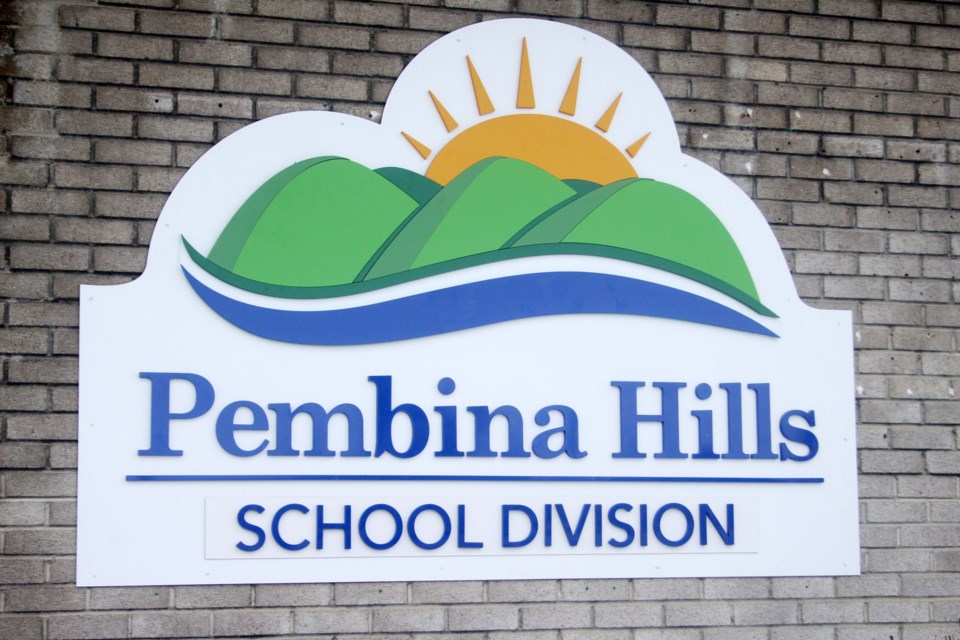The Pembina Hills School Division finished the 2020-2021 financial year with an operating surplus of $2.7 million, but may need to incur some strategic deficits in the future to bring down their reserves if the province makes good on its threat to claw back reserves or reduce funding.
That was according to treasurer Heather Nanninga, who presented the Pembina Hills trustees with the audited financial statements for the year ending Aug. 31, 2021 at their Nov. 24 meeting.
Nanninga’s presentation started off with a brief run-down of the past year and some of the changes that affected the division’s finances.
One of the biggest changes was the province’s move to K-12 funding based on a weighted moving average, which funds divisions based on their enrolment projections over multiple years.
While the enrolment of community schools is relatively static from year to year, Nanninga indicated this poses a challenge with Vista Virtual School, as their enrolment shifts quite a bit even within a given year.
Another major change in the division’s finances and operations was the permanent closure of the Alberta Distance Learning Centre (ADLC) in Barrhead at the end of the 2020-2021 school year.
One way the ADLC’s closure was felt on the K-12 side of Pembina Hills’ operations was the need to find positions for 80 to 90 ADLC employees at local schools.
Some of the bigger capital projects from the year included the renovations to the food lab at Barrhead Composite High School, gym and stage renovations at Westlock Elementary School and roof replacements at Westlock Elementary and Fort Assiniboine School.
Looking to the financial statements, the division received $57.779 million in government grants from Alberta Education, which was $1.7 million more than what they had projected.
Nanninga noted that part of that was due to some left-over COVID grant money. “When that came through, it kind of bumped us up from where our budget had been,” she said.
Other revenue sources were considerably out of alignment with projections – for instance, the division received $430,000 less in fees than projected, but sales and services of products accounted for $700,000 more than projected.
All in all, the division finished the year with $60.527 million in revenue, slightly higher than the $58.971 million originally projected.
On the expense side, spending on K-12 instruction was within projections, while some of the expenses like transportation, operations and maintenance were lower than expected. (Transportation, for instance, was projected to be $5.165 million, but the division only spent $4.795 million.)
In the end, the division generated $57.775 million in expenses; when deducted from revenue, the division ended the year with a $2,752,296 surplus.
When a division has an operating surplus, that gets rolled into what’s called their accumulated surplus, which is held in reserves. Nanninga said that one of the bigger projects she intends to initiate (and which the board will have to contend with) is looking at that accumulated surplus with the intent of drawing it down.
She explained that the province doesn’t want school divisions to have a lot of money in reserves and is “making some noise about clawing back some of those reserves or reducing our funding.”
Nanninga said she understands the province’s logic – money being held in reserves is money not being spent on children’s education, after all.
At the same time, the division can end some years with a surplus because they are cautious and thrifty about spending.
As such, Nanninga warned that the division may need to run “strategic deficits” for a while to bring down the division’s reserves.
Looking at historical data, Nanninga noted the division had been drawing down its reserves up until 2018-2019, when they started growing again.
She acknowledged that the COVID-19 pandemic made budgeting more difficult, as the division ended up spending less money on things like field trips or professional development.
“We’re now starting to return to relative normal, so this is a problem we are going to have to manage a bit,” she said.
The board ultimately passed a motion approving the 2020-2021 audited financial statements for the division and the ADLC.



